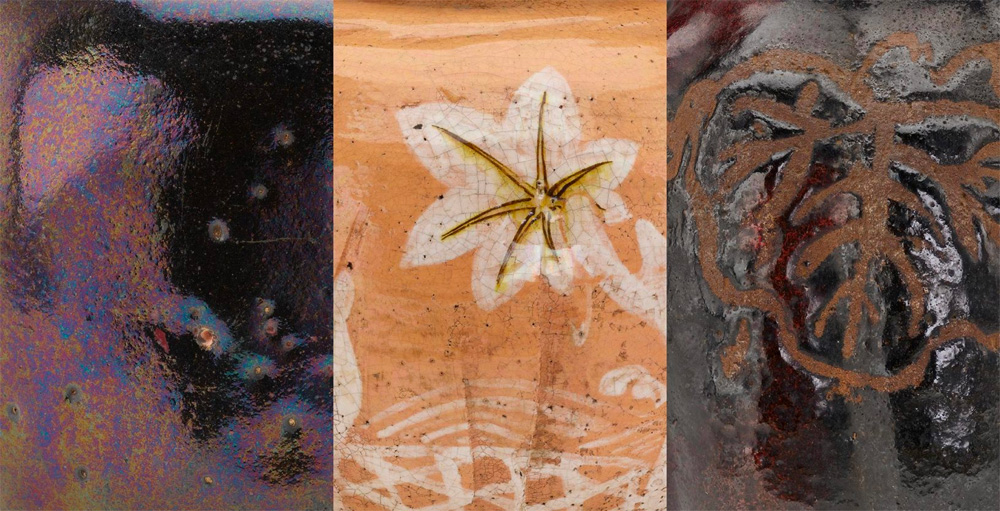|
Detail: Japan’s rich history of ceramic artistry developed in large part alongside the culture of drinking tea. The practice of preparing and serving matcha, powdered green tea, was called chanoyu (literally, “hot water for tea”) and gained popularity in the sixteenth century. Japanese tea practitioners initially used Chinese and Korean antique ceramics as tea bowls but began using newly made Japanese tea bowls, such as Raku ware, in the sixteenth century. Raku ware shares its name with the family that has made these ceramics in Kyoto since the sixteenth century. Unlike most tea bowls, Raku ceramics are built by hand—a process described as “knotting clay”—as opposed to using a wheel. Sixteenth-century potters are said to have collaborated closely with their tea-practitioner patrons to create distinctive vessels best-suited for tea drinking.
Over the next four centuries, a network of Japanese potters incorporated Raku techniques into their practice; these techniques were later adopted in the 1950s by the American studio pottery movement. Raku wares are now internationally recognized as a Japanese ceramic style and continue to inspire artistic creativity worldwide. Knotted Clay: Raku Ceramics and Tea explores these distinctive, hand-molded ceramics and their close relationship to Japanese tea culture. This exhibition features tea bowls, water containers, and other vessels in the museum’s permanent collection that demonstrate the glazes and forms unique to Raku ware.
|

